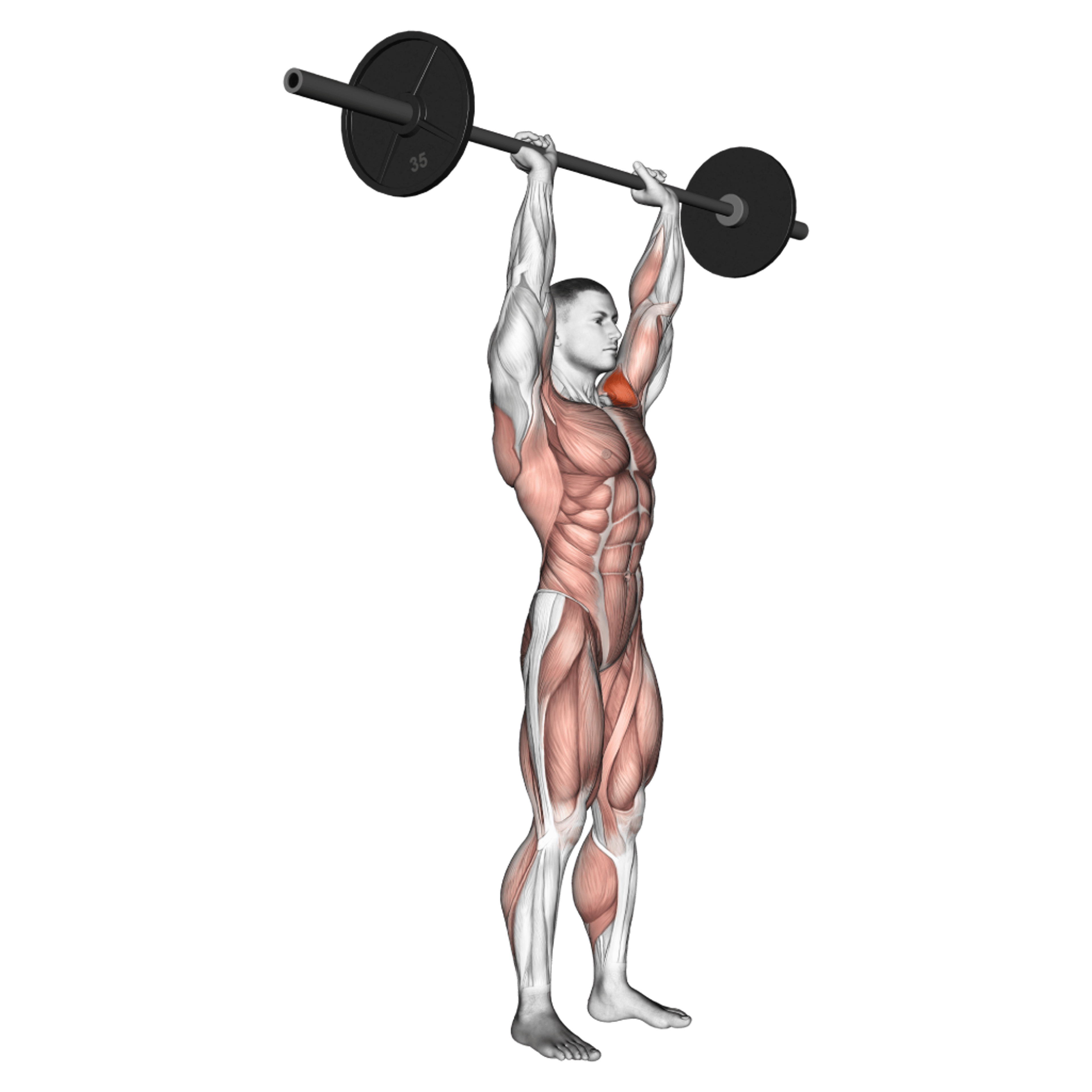Dumbbell Power Clean and Jerk

Overview
- Primary Focus:
- Full body.
- Equipment:
- Dumbbell.
- Difficulty:
- Advanced.
General Information
Dumbbell Power Clean and Jerk is a compound exercise that primarily targets the upper legs and also engages the shoulders, back, and glutes. It is an advanced-level movement that blends a fast clean to the shoulders with an overhead jerk using one or two dumbbells.
Dumbbells reduce the mobility demands of the front rack and allow independent shoulder paths, making it viable in home or gym settings. Expect a strong conditioning component at moderate loads with crisp mechanics and short sets.
Use it to develop power, coordination, and overhead stability when a barbell is unavailable or to change stimulus. Keep reps low, focus on speed and precision, and avoid grinding presses after the clean.
If technique breaks down, separate the pieces into power cleans and push jerks to clean up timing, dip direction, and lockout quality before recombining.
Muscles Worked
- Biceps Femoris
- Primary
- Erector Spinae
- Primary
- Gluteus Maximus
- Primary
- Lower Trapezius
- Primary
- Rectus Femoris
- Primary
- Semimembranosus
- Primary
- Semitendinosus
- Primary
- Vastus Lateralis
- Primary
- Vastus Medialis
- Primary
- Deltoid
- High
- Gastrocnemius (Lateral Head)
- High
- Gastrocnemius (Medial Head)
- High
- Latissimus Dorsi
- High
- Rhomboid Major
- High
- Soleus
- High
- Biceps Brachii
- Medium
- Brachialis
- Medium
- Brachioradialis
- Medium
- External Oblique
- Medium
- Rectus Abdominis
- Medium
- Flexor Carpi Radialis
- Low
- Flexor Carpi Ulnaris
- Low
- Pectoralis Major
- Low
- Serratus Anterior
- Low
- Upper Trapezius
- Low
Instructions
- Stand tall with dumbbells at the sides or in front, feet hip-width. Brace and set a neutral spine.
- Initiate the clean by hinging slightly, then drive hard through the floor, keeping the bells close as they travel up the body’s line of pull.
- Extend hips, knees, and ankles aggressively, then pull under and receive the dumbbells on the shoulders in a power position above parallel.
- Recompose your base, take a shallow, vertical dip with a stacked torso, and drive the bells overhead for the jerk using leg power, not a strict press first.
- Punch to a stable lockout with ribs down and elbows extended. Recover the feet and balance under the load before lowering safely to the shoulders or floor.
- Perform controlled singles or small sets with resets to maintain timing between the clean and jerk phases.
Common Mistakes
Injuries
Dumbbell Power Clean and Jerk is a high risk exercise when performed with proper technique.
Typical issues include low back strain from swinging the bells, shoulder irritation from pressing the jerk, and unstable catches. Keep the path close, dip straight, and use leg drive to protect the shoulders at lockout.
Reduce load, break the movement into clean and push jerk segments, or practice from the hang if timing falters. Stop or swap variations if pain persists and address mobility or coaching gaps.
Alternative Exercises

Frequently Asked Questions
- Q: Should I use one or two dumbbells?
Both are valid. Two dumbbells increase total load and symmetry demands; one dumbbell variation is easier to learn and reduces coordination complexity.
- Q: How should I breathe?
Take a brace before the clean, exhale briefly at the rack if needed, then re-brace for the dip and drive. Maintain rib position at lockout.
- Q: Where should the dumbbells sit in the rack?
Rest on the shoulders with elbows slightly forward and wrists neutral. Avoid holding far out in front which increases leverage on the wrists.
Overview
- Primary Focus:
- Full body.
- Equipment:
- Dumbbell.
- Difficulty:
- Advanced.




